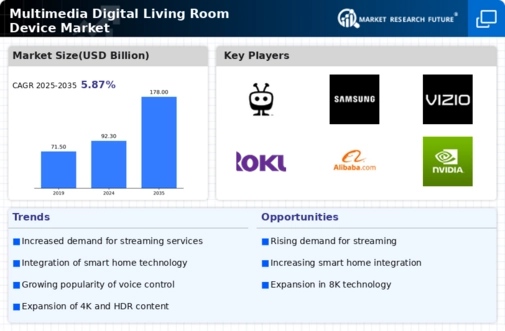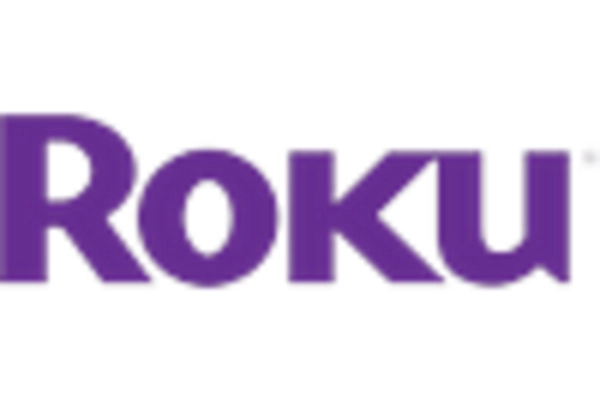Increased Demand for Streaming Services
The Multimedia Digital Living Room Device Market is significantly influenced by the rising demand for streaming services. As consumers increasingly favor on-demand content over traditional cable subscriptions, devices that support popular streaming platforms are becoming essential. Recent statistics indicate that the number of streaming subscribers has surpassed 1 billion worldwide, reflecting a shift in viewing habits. This surge in streaming service subscriptions is prompting manufacturers to enhance device compatibility and performance, thereby stimulating growth in the multimedia device sector. Consequently, the industry is adapting to meet the evolving preferences of consumers.
Growing Interest in Smart Home Ecosystems
The Multimedia Digital Living Room Device Market is benefiting from the growing interest in smart home ecosystems. As consumers seek to create interconnected environments, devices that can integrate with smart home systems are increasingly in demand. This trend is evidenced by the rising sales of smart speakers and home automation products, which are projected to reach significant market penetration in the coming years. The ability of multimedia devices to function as hubs for controlling various smart home applications enhances their appeal, suggesting a potential for sustained growth in the industry as more households adopt smart technologies.
Technological Advancements in Multimedia Devices
The Multimedia Digital Living Room Device Market is experiencing rapid technological advancements that enhance user experience and functionality. Innovations such as 4K and 8K resolution, HDR support, and improved audio technologies are becoming standard features. These advancements not only improve visual and auditory quality but also facilitate seamless integration with other smart home devices. According to recent data, the adoption of 4K TVs has surged, with estimates suggesting that over 50% of households now own such devices. This trend indicates a growing consumer preference for high-quality multimedia experiences, driving demand within the industry.
Shift Towards Interactive and Immersive Experiences
The Multimedia Digital Living Room Device Market is witnessing a shift towards interactive and immersive experiences. Consumers are increasingly seeking devices that offer not just passive viewing but also engaging content interactions. Technologies such as virtual reality (VR) and augmented reality (AR) are gaining traction, with projections indicating that the AR and VR market could reach substantial figures in the next few years. This demand for immersive experiences is prompting manufacturers to innovate and develop devices that support these technologies, thereby expanding the scope of the multimedia device market and attracting a broader audience.
Rising Consumer Expectations for Quality and Performance
The Multimedia Digital Living Room Device Market is characterized by rising consumer expectations for quality and performance. As technology evolves, consumers are becoming more discerning, seeking devices that deliver superior audio-visual experiences. This trend is reflected in the increasing sales of high-end devices, with market data suggesting that premium product segments are experiencing robust growth. Manufacturers are responding by enhancing product features, such as improved processing power and advanced connectivity options, to meet these expectations. This focus on quality and performance is likely to drive competition within the industry, fostering innovation and further market expansion.

















Leave a Comment